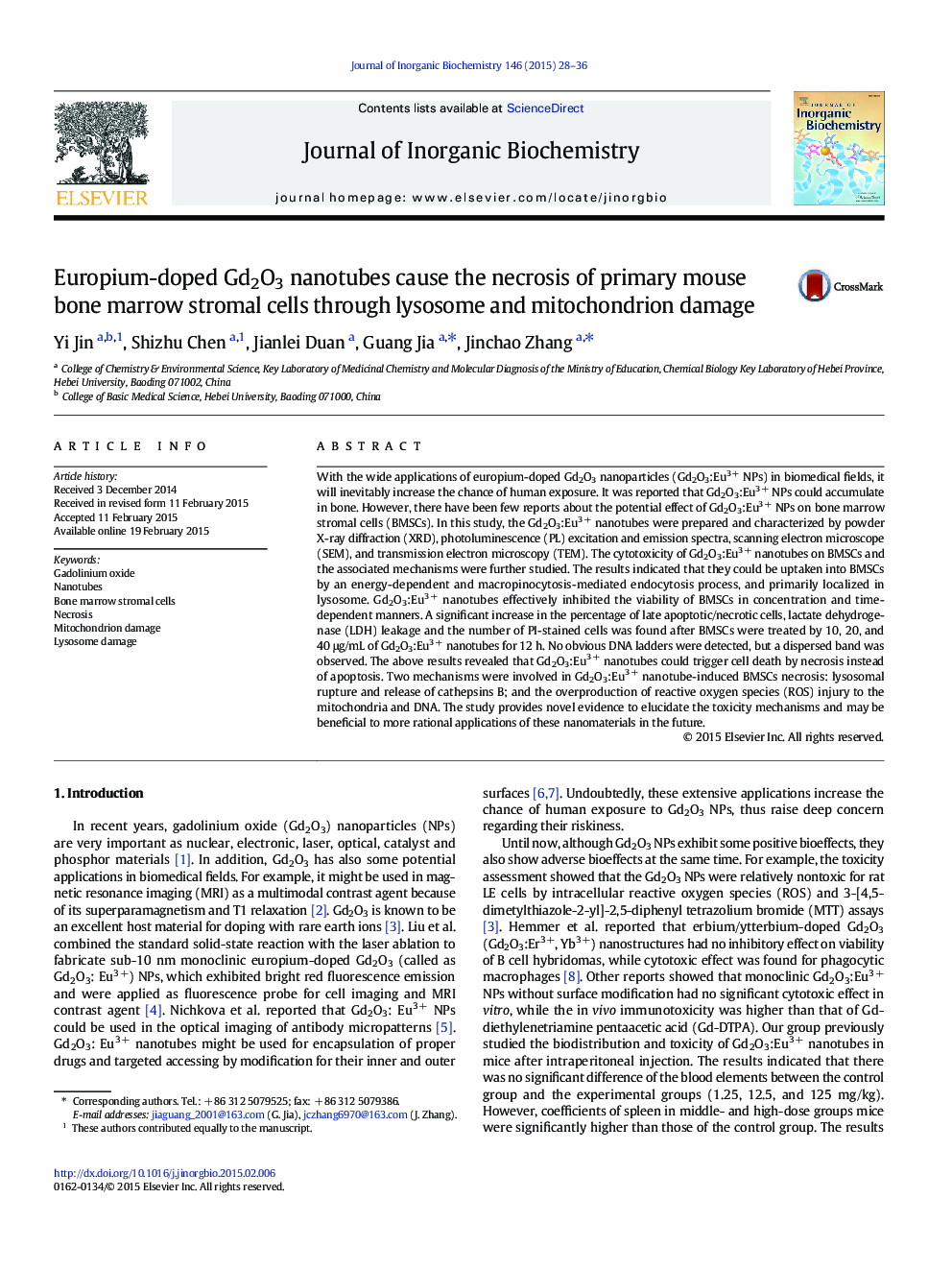| Article ID | Journal | Published Year | Pages | File Type |
|---|---|---|---|---|
| 1316109 | Journal of Inorganic Biochemistry | 2015 | 9 Pages |
•Gd2O3:Eu3 + nanotubes have been synthesized.•Gd2O3:Eu3 + nanotubes could trigger the necrosis of BMSCs (bone marrow stromal cells).•Gd2O3:Eu3 + nanotubes cause the cell necrosis by lysosome and mitochondrion damage.
With the wide applications of europium-doped Gd2O3 nanoparticles (Gd2O3:Eu3 + NPs) in biomedical fields, it will inevitably increase the chance of human exposure. It was reported that Gd2O3:Eu3 + NPs could accumulate in bone. However, there have been few reports about the potential effect of Gd2O3:Eu3 + NPs on bone marrow stromal cells (BMSCs). In this study, the Gd2O3:Eu3 + nanotubes were prepared and characterized by powder X-ray diffraction (XRD), photoluminescence (PL) excitation and emission spectra, scanning electron microscope (SEM), and transmission electron microscopy (TEM). The cytotoxicity of Gd2O3:Eu3 + nanotubes on BMSCs and the associated mechanisms were further studied. The results indicated that they could be uptaken into BMSCs by an energy-dependent and macropinocytosis-mediated endocytosis process, and primarily localized in lysosome. Gd2O3:Eu3 + nanotubes effectively inhibited the viability of BMSCs in concentration and time-dependent manners. A significant increase in the percentage of late apoptotic/necrotic cells, lactate dehydrogenase (LDH) leakage and the number of PI-stained cells was found after BMSCs were treated by 10, 20, and 40 μg/mL of Gd2O3:Eu3 + nanotubes for 12 h. No obvious DNA ladders were detected, but a dispersed band was observed. The above results revealed that Gd2O3:Eu3 + nanotubes could trigger cell death by necrosis instead of apoptosis. Two mechanisms were involved in Gd2O3:Eu3 + nanotube-induced BMSCs necrosis: lysosomal rupture and release of cathepsins B; and the overproduction of reactive oxygen species (ROS) injury to the mitochondria and DNA. The study provides novel evidence to elucidate the toxicity mechanisms and may be beneficial to more rational applications of these nanomaterials in the future.
Graphical abstractThe cytotoxicity of Gd2O3:Eu3 + nanotubes on BMSCs (bone marrow stromal cells) and the associated mechanisms were studied. The results indicated that they could trigger cell necrosis. Two mechanisms were involved in BMSCs necrosis: lysosomal rupture and release of cathepsins B; and the overproduction of ROS injury to the mitochondria and DNA.Figure optionsDownload full-size imageDownload as PowerPoint slide
